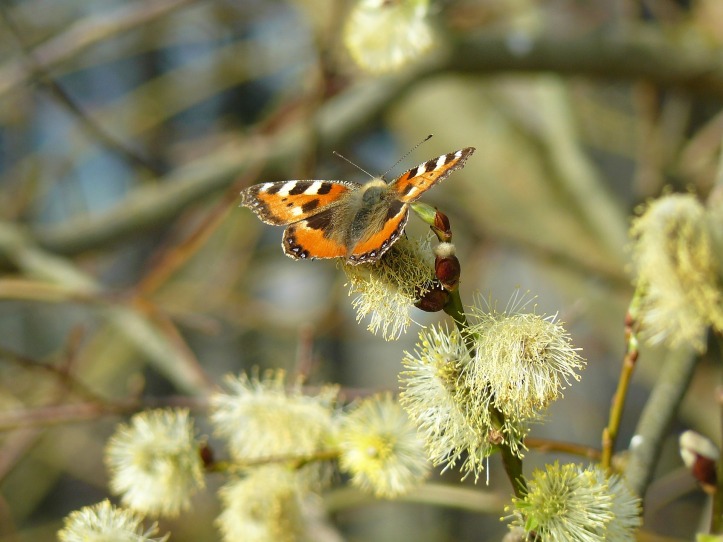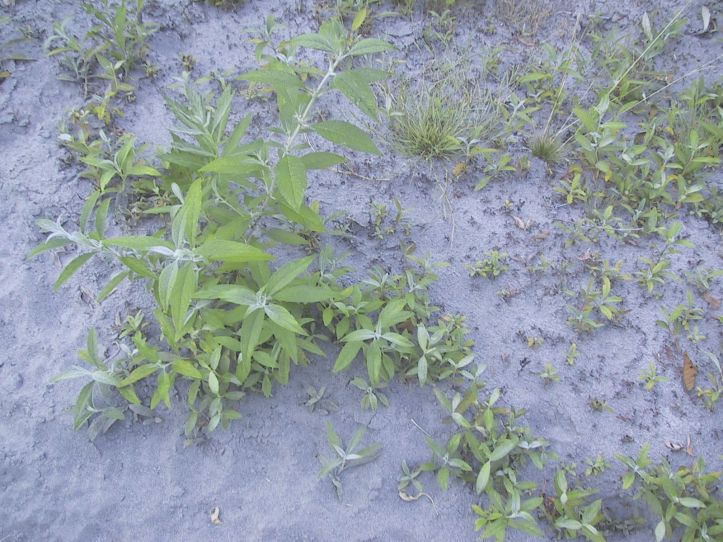
Late fall is a great time to trim butterfly bush plants before the seeds fly away. Seeds can move 40 miles away on the wind and take root everywhere from roadsides to pristine rivers. The blooms have mostly lost their purple color and the seeds haven’t been set loose yet. So if you have butterfly bush in your garden, get out those clippers and bags and stop it from spreading! Even better, pull it up by the roots and replace it with something less invasive.

If you aren’t sure why you would want to do that, read on for more background on this plant.
Butterfly bush (also called David’s buddleia or Buddleia davidii) is a Class B noxious weed in Washington and its sale has been prohibited since 2016 (with the exception of sterile cultivars); although control is not required in most counties (see the Washington State Noxious Weed Board weed list for details).
However, butterfly bush is also a popular flowering shrub for landscapes, especially for attracting butterflies (but don’t confuse it with milkweed, which is also called butterfly plant but is an entirely different plant). Because of its popularity for gardens, butterfly bush is one of the most controversial plants on Washington’s noxious weed list. Even some people who fully understand how invasive this plant is still can’t bring themselves to uproot their prize garden specimens.

Without a doubt, butterfly bush offers gardeners many benefits. Besides attracting butterflies, bees and birds with its abundant nectar throughout the summer and early fall, this flowering shrub requires almost no water, insecticides, or fertilizer to keep it healthy and productive. These qualities combined with its tough, indestructible nature have made butterfly bush a huge favorite among northwest gardeners. So why is butterfly bush on the noxious weed list, you may ask?
Many of the qualities that make butterfly bush such a durable garden plant also make it a serious problem in nature. In its native range in China, butterfly bush is adapted to colonizing new areas, such as river banks disturbed by floods, and rapidly forming mature, seeding stands that can resist invasion by other fast-growing plants. Its ability to grow in low-nutrient, low-moisture soil makes it perfectly suited for colonizing sandy river banks.
The plant’s resistance to garden insects also makes it poor habitat for the caterpillars and other critters needed in nature to sustain the food chain. This is especially true on our rivers where insects feeding on native shrubs and trees fall into the water to feed salmon and other fish. In fact, one of the impacts of butterfly bush on rivers is to crowd out the willows that are such good habitat for many of our native butterflies. Unlike butterfly bush, willows provide food for both the larvae and the mature butterflies.

If you have butterfly bush growing in your garden, you may not have noticed any seedlings. Does that mean your plant is sterile and not spreading? Unfortunately, that may not be true. Butterfly bush seeds are small and dispersed by wind for many miles from the parent plant. These are colonizers after all, looking for new territory to take over.

Also, butterfly bush seems to germinate best in well-drained, open areas, not in nice, rich garden soil with lots of other plants to compete with. You only have to look along the roadsides in King County to see how successful butterfly bush is in spreading to new areas.

Fortunately, because butterfly bush mostly spreads by seed (it also spreads somewhat by layering and sprouting from fallen branches), you can stop your butterfly bush from spreading out of your garden by cutting off the flower stalks in the fall. The seeds usually disperse over the winter and in the spring, so cut the flowers in the fall, don’t wait until your spring garden clean up.
In King County, control of butterfly bush is not required, largely because it has already become too established to remove it all, but removal is definitely encouraged whenever possible. Organizations and agencies are working to remove it from rivers and other natural areas, but there is a significant legacy of existing infestations so it will take a considerable effort and many years to remove it all.

This means that in King County it is up to everyone to voluntarily do the right thing. The impact of this plant along our rivers is serious and it is a growing threat. Removing butterfly bush from natural areas once it is established is very costly and may not be possible in some remote areas. So we ask everyone to consider using other garden plants (see GardenWise online or the Garden Wise brochure for suggestions) and to remove those that you already have in the garden. If you still decide to use this plant in your landscape, make sure to select only sterile cultivars. And to be safe, clip off those fading blooms anyways, just in case sterile turns out to be not quite entirely sterile.
For more information about butterfly bush, see our web page and follow the links for additional resources. Happy clipping!




We were just talking about how butterfly bush is invasive in Switzerland! It sounds like you have the same problem with it that we have with pampas grass. The garden varieties of pampas grass are supposed to be sterile because they lack male flowers. However, they can be pollinated by the naturalized Cortaderia jubata, not that it matters much. They are everywhere anyway.
I had heard the same thing about pampas grass and also heard recently that it was being propagated by seed more often than it used to be and that more male plants were being sold by accident as a result. I’ve wondered if that helps explain the recent spread of pampas grass we’ve noticed in Washington lately. Purple loosestrife is another plant where sterile cultivars were developed and sold only to find out that they weren’t sterile after all, just less prolific seeders. It’s not easy to keep a plant from making any seeds!
I have heard of the male plants being sold too, but have never actually seen it. I do not think it really matters. I mean, the Cortaderia jubata is everywhere. Female flowers have no shortage of pollen. In urban areas, they do not have much opportunity to spread very far. In Los Angeles, they spread east on the Santa Monica Freeway where I doubt anyone is concerned about how they affect the environment. My neighborhood is very different. We don’t want that stuff spreading any farther into the Santa Cruz mountains that it already is. Pampas grass is not available in nurseries, and I do not know of anyone planting it in a very long time. I did happen to find one on the side of the road in my neighborhood. We already have broom and Acacia dealbata. Tree huggers don’t want the acacia trees to be cut down! They want to protect the bluegums and black acacias, and really any tree that must be cut don. Sorry for my rant.
Great info! In Washington we don’t have jubata grass that we know of but we have recently seen pampas grass naturalizing in some areas. It has been widely planted in cities such as Seattle up here, but hadn’t really spread until recently so it is interesting to speculate why that might be.
Plant native Spiraea Douglaslii (hardhack) instead of butterfly bush. https://green2.kingcounty.gov/gonative/PhotoFileDir/SpiraeadouglasiablooAMQDK.jpg
Great suggestion! Thanks!